- Home
- P. D. James
Death in Holy Orders Page 8
Death in Holy Orders Read online
Page 8
Memory of the church came back to him with the smell of incense and candle smoke. They moved down the northern aisle and Father Martin said, “You’d like, of course, to see the Doom again.”
The Doom could be illumined by a light fixed to a nearby pillar. Father Martin lifted his arm and the tenebrous indecipherable scene sprang into life. They were facing a vivid depiction of the last judgement, painted on wood, the whole shaped in a half-moon with a diameter of about twelve feet. At the head was the seated figure of Christ in glory, holding out his wounded hands over the drama below. The central figure was obviously St. Michael. He was holding a heavy sword in his right hand and, in his left, dangling scales in which he was weighing the souls of the righteous and the unrighteous. To his left, the Devil, with scaly tail and grinning lascivious jaws, the personification of horror, prepared to claim his prize. The virtuous lifted pale hands in prayer, the damned were a squirming mass of black pot-bellied, open-mouthed hermaphrodites. Beside them a group of lesser devils with pitchforks and chains were busily shoving their victims into the jaws of an immense fish with teeth like a row of swords. To the left Heaven was depicted as a castellated hotel with an angel as door-keeper welcoming in the naked souls. St. Peter in cope and triple tiara was receiving the more important of the blessed. All were naked but still wearing the accoutrements of rank; a cardinal in his scarlet hat, a bishop in his mitre, a king and queen both crowned. There was, thought Dalgliesh, little democracy about this medieval vision of Heaven. All the blessed, to his eyes, wore expressions of pious boredom; the damned were considerably more lively, more defiant than regretful, as they were plunged feet first down the fish’s throat. One, indeed, larger than the rest, was resisting his fate and making what looked like a finger to nose gesture of contempt towards the figure of St. Michael. The Doom, originally more prominently displayed, was designed to terrify medieval congregations into virtue and social conformity literally through the fear of hell. Now it was viewed by interested academics or by modern visitors for whom the fear of hell no longer had power and who sought heaven in this world, not in the next.
As they stood regarding it together, Father Martin said, “Of course it’s a remarkable Doom, probably one of the best in the country, but I can’t help wishing we could put it somewhere else. It probably dates from about 1480.1 don’t know whether you’ve seen the Wenhaston Doom. This is so like it that it must have been painted by the same monk from Blythburgh. While theirs was left outside for some years and has been restored, ours is far more in its original condition. We were lucky. It was discovered in the 1930s in a two-storeyed barn near Wisset where it was used to partition a room, so it’s been in the dry probably since the 1S00s.”
Father Martin switched off the light and prattled on happily.
“We had a very early circular tower standing by itself you may know the one at Bramfield but that has long since gone. This was a seven-sacrament font but as you can see, little of the carving remains. Legend has it that the font was dredged up from the sea in a great storm in the late 1700s. We don’t know, of course, whether it was originally here or belongs to one of the drowned churches. Many centuries are represented here. As you see, we still have four seventeenth-century box pews.”
Despite their age, it was the Victorians who came to mind when Dalgliesh saw box pews. Here the squire and his family could sit in wood-enclosed privacy, unseen by the rest of the congregation and hardly viewed from the pulpit. He pictured them closeted together and wondered whether they took with them cushions and rugs or provided themselves with sandwiches, drinks and perhaps even a discreetly covered book to alleviate the hours of abstinence and the tedium of the sermon. As a boy his mind had been much exercised with wondering what the squire would do if he suffered from a weak bladder. How could he, or indeed the rest of the congregation, sit through the two services on Sacrament Sunday, through long sermons or when the Litany was said or sung? Was it perhaps usual to have a chamber-pot tucked away under the wooden seat?
And now they were walking up the aisle towards the altar. Father Martin moved to a pillar behind the pulpit and put up his hand to a switch. Immediately the gloom of the church seemed to deepen into a darkness as, with dramatic suddenness, the painting glowed into life and colour. The figures of the Virgin and St. Joseph, fixed in their silent adoration for over five hundred years, seemed for a moment to float away from the wood on which they were painted to hang like a trembling vision on the still air. The virgin had been painted against a background of intricate brocade in gold and brown which in its richness emphasized her simplicity and vulnerability. She was seated on a low stool with the naked Christ-child resting on a white cloth on her lap. Her face was a pale and perfect oval, the mouth tender under a narrow nose, the heavily-lidded eyes under thinly-arched brows fixed on the child with an expression of resigned wonder. From a high smooth forehead the strands of crimped auburn hair fell over her blue mantle to the delicate hands and fingers barely touching in prayer. The child gazed up at her with both arms raised as if foreshadowing the crucifixion. St. Joseph, red-coated, was seated to the right of the painting, a prematurely aged, half-sleeping custodian, heavily leaning on a stick.
For a moment Dalgliesh and Father Martin stood in silence. Father Martin didn’t speak until he had turned off the light. Dalgliesh wondered whether he had been inhibited from mundane conversation while the painting was working its magic.
Now he said, “The experts seem to agree that it’s a genuine Rogier van der Weyden, probably painted between 1440 and 1445. The other two panels probably showed saints with portraits of the donor and his family.”
Dalgliesh asked, “What is its provenance?”
“Miss Arbuthnot gave it to the college the year after we were founded. She intended it as an altar-piece and we have never considered having it anywhere else. It was my predecessor, Father Nicholas Warburg, who called in the experts. He was very interested in paintings, particularly Netherlands Renaissance, and had a natural curiosity to know whether it was genuine. In the document which accompanied the gift, Miss Arbuthnot merely described it as part of an altar triptych showing St. Mary and St. Joseph, possibly attributable to Rogier van der Weyden. I can’t help feeling that it would be better if we’d left it like that. We could just enjoy the painting without being obsessed with its safety.”
“How did Miss Arbuthnot acquire it?”
“Oh, by purchase. A landed family was disposing of some of its art treasures to help keep the estate going. That kind of thing. I don’t think Miss Arbuthnot paid very highly for it. There was the doubt about the attribution and, even if genuine, this particular painter wasn’t as well known or as highly regarded in the 1860s as he is today. It’s a responsibility, of course. I know that the Archdeacon feels very strongly that it ought to be moved.”
“Moved where?”
“To a cathedral, perhaps, where greater security would be possible. Perhaps even to a gallery or a museum. I believe he has even suggested to Father Sebastian that it should be sold.”
Dalgliesh said, “And the money given to the poor?”
“Well, to the Church. His other argument is that more people should have a chance to enjoy it. Why should a small remote theological college add this to our other privileges?”
There was a note of bitterness in Father Martin’s voice. Dalgliesh didn’t speak and after a pause his companion, as if feeling that he may have gone too far, went on.
“These are valid arguments. Perhaps we ought to take account of them, but it’s difficult to visualize the church without the altar-piece. It was given by Miss Arbuthnot to be placed above the altar in this church and I think we should strongly resist any suggestion that it should be moved. I could willingly part with the Doom, but not with this.”
But as they turned away Dalgliesh’s mind was busy with more secular considerations. It hadn’t taken Sir Alred’s words about the vulnerability of the college to remind him how uncertain its future must be. What long-term future
was there for the college, its ethos out of sympathy with the prevailing views of the Church, educating only twenty students, occupying this remote and inaccessible site? If its future was now in balance, the mysterious death of Ronald Treeves might be the one factor that tipped the scales. And if the college closed, what happened to the van der Weyden, to the other expensive objects bequeathed to it by Miss Arbuthnot, to the building itself? Remembering that photograph, it was difficult to believe that she hadn’t, however reluctantly, envisaged this possibility and made provision for it. One returned, as always, to the central question: who benefits? He would like to have asked Father Martin, but decided it would be both tactless and, in this place, inappropriate. But the question would have to be asked.
The four sets of accommodation for guests had been named by Miss Arbuthnot after the four doctors of the Western Church: Gregory, Augustine, Jerome and Ambrose. After this theological conceit, and having decided that the four cottages for staff should be called Matthew, Mark, Luke and John, inspiration had apparently faltered and the sets for the students were less imaginatively but more conveniently identified by numbers in the north and south cloisters.
Father Martin said, “You used to be in Jerome when you were here as a boy. Perhaps you remember. It’s our one double now, so the bed should be comfortable. It’s the second along from the church. I’ve no key for you, I’m afraid. We never have had keys to the guest rooms Everything is safe here. If you do have any papers you feel should be locked away, Miss Ramsey will look after them. She will be here at nine o’clock on Monday. I hope you’ll be comfortable, Adam. As you see, the sets have been refurbished since your last visit.”
They had indeed. Where before the sitting-room had been a cosy, overcrowded repository for odd items of furniture which looked as if they were the rejects of the parish jumble sale, it was now as starkly functional as a student’s study. Nothing here was superfluous; unfussy and conventional modernity had replaced individuality. There was a table with drawers, which could also serve as a desk, set before the window which gave a view westwards over the scrubland, two easy chairs, one each side of the gas fire, a low table and a bookcase. To the right of the fireplace was a cupboard with a Formica top holding a tray with an electric kettle, a teapot and two cups and saucers.
Father Martin said, “There’s a small refrigerator in that cupboard and Mrs. Pilbeam will put in a pint of milk each day. As you will see when you go upstairs, we’ve installed a shower in what was part of the bedroom. You’ll remember that when you were here last you had to walk along the cloisters and use one of the bathrooms in the main house.”
Dalgliesh did remember. It had been one of the pleasures of his stay to walk out in his dressing-gown into the morning air, a towel round his shoulders, either to the bathroom or to walk the half-mile to the bathing hut for a pre-breakfast swim. The small modern shower was a poor substitute.
Father Martin said, “I’ll wait for you here while you unpack if I may. There are two things I want to show you.”
The bedroom was as simply furnished as the room beneath. There was a double wooden bed with a bedside table and reading lamp, a fitted cupboard, another bookcase and an easy chair. Dalgliesh unzipped his travelling bag and hung up the one suit he had thought it necessary to bring. After a brief wash he rejoined Father Martin who was standing at the window looking out over the headland. As Dalgliesh entered he took a folded sheet of paper from the pocket of his cloak.
He said, ‘I have something you left here when you were fourteen. I didn’t send it on because I wasn’t sure whether you’d be happy to know that I’d seen it, but I’ve kept it and perhaps you’d now like it back. It’s four lines of verse. I suppose you could call it a poem.”
And that, thought Dalgliesh, was an unlikely supposition. He suppressed a groan and took the paper held out to him. What youthful indiscretion, embarrassment or pretension was now to be resurrected from the past to his discomfort? The sight of the handwriting, familiar and yet strange and to his eyes, despite the careful calligraphy, a little tentative and unformed, jolted him back over the years more strongly than an old photograph because it was more personal. It was difficult to believe that the boyish hand which had moved over this quarter sheet of paper was the same as the hand that now held it.
He read the lines silently.
The Bereaved “Another lovely day,” you said in passing, Dull-voiced, and moved unseeing down the street. You didn’t say, “Please wrap your jacket round me, Outside the sun, inside the killing sleet.”
It brought back another memory, one which was common in his childhood: his father taking a burial service, the richness of the clods of earth heaped beside the bright green of artificial grass, a few wreaths, the wind billowing his father’s surplice, the smell of flowers. Those lines, he remembered, had been written after the burial of an only child. He remembered, too, that he had worried over the adjective in its last line, thinking the two vowel sounds were too similar yet unable to find a suitable substitute.
Father Martin said, “I thought they were remarkable lines for a fourteen-year-old. Unless you want them back I should like to keep them.”
Dalgliesh nodded and handed over the paper silently. Father Martin folded it back in his pocket with something of the satisfaction of a child.
Dalgliesh said, “There was something else you wanted to show me.”
“Yes indeed. Perhaps we could sit down.”
Again Father Martin slipped a hand into his deep cloak pocket. He brought out what looked like a child’s exercise book rolled up and bound with a rubber band. Smoothing it out on his lap and folding his hands over it as if he were protecting it, he said, “Before we go to the beach I’d like you to read this. It’s self-explanatory. The woman who wrote it died of a heart-attack on the evening of the final entry. It may have no significance whatsoever for Ronald’s death. I’ve shown it to Father Sebastian and that’s his view. He thinks it can safely be ignored. It could mean nothing, but it worries me. I thought it would be a good idea to show it to you here where we have no chance of being interrupted. The two entries I’d like you to read are the first and the last.”
He handed over the book and sat in silence until Dalgliesh had read it. Dalgliesh asked, “How did you come by it, Father?”
“I looked for it and found it. Margaret Munroe was found dead in her cottage by Mrs. Pilbeam at six-fifteen on Friday 13 October. She was on her way to the college and was surprised to see a light on so early in St. Matthew’s Cottage. After Dr. Metcalf he’s the general practitioner who looks after us at St. Anselm’s had seen the body and it had been removed, I thought about my suggestion that Margaret should write an account of finding Ronald and wondered whether in fact she had done so. I found this under her stack of writing paper in the drawer of a small wooden desk she had in her cottage. There had been no serious attempt to conceal it.”
“And as far as you can tell no one else knows of this diary’s existence?”
“No one except Father Sebastian. I’m sure Margaret wouldn’t have confided even in Mrs. Pilbeam, who was the member of staff closest to her. And there was no sign that a search had been made of the cottage. The body looked perfectly peaceful when I was called. She was just sitting in her chair with her knitting in her lap.”
“And you have no idea what she’s referring to?”
“None. It must have been something she saw or heard on the day of Ronald’s death which sparked off memory, that and Eric Surtees’s gift of leeks. He’s a handyman here, helping Reg Pilbeam. But, of course, you know that from the diary. I can’t think what it could have been.”
“Was her death unexpected?”
“Not really. She’d had a serious heart condition for some years. Dr. Metcalf and the consultant she saw in Ipswich both discussed with her the possibility of a heart transplant, but she was adamant that she didn’t want an operation of any kind. She said that scarce resources should be used on the young and on parents bringing up children. I
don’t think Margaret cared very much whether she lived or died after her son was killed. She wasn’t morbid about it, it was just that she wasn’t enough attached to life to fight for it.”
Dalgliesh said, “I’d like to keep this diary, if I may. Father Sebastian may be right, it could be totally without significance, but it’s an interesting document if one is considering the circumstances of Ronald Treeves’s death.”
He put the exercise book away in his briefcase, shut it and set the combination lock. They sat for another half-minute in silence. It seemed to Dalgliesh that the air between them was heavy with unspoken fears, half-formed suspicions, a general sense of unease. Ronald Treeves had died mysteriously and a week later the woman who had found his body, and who had subsequently discovered a secret which she felt was important, was herself dead. It could be no more than a coincidence. There was so far no evidence of foul play, and he shared what he guessed was Father Martin’s reluctance to hear those words spoken aloud.
Dalgliesh said, “Did you find the verdict of the inquest surprising?”
“A little surprising. I would have expected an open verdict. But the thought that Ronald could have killed himself, and by an act so appalling, is one we here can hardly bear to let into our minds.”
“What sort of a boy was he? Was he happy here?”
“I’m not sure that he was, although I don’t think any other theological college would have suited him better. He was intelligent and hard-working but singularly lacking in charm, poor boy. He was curiously judge mental for someone young. I would have said he combined a certain insecurity with considerable self-satisfaction. He had no particular friends not that particular friendships are encouraged and I think he may have been lonely. But there was nothing in his work or his life here to suggest despair or that he was tempted to the grievous sin of self-destruction. Of course, if he did kill himself, then we must be in some way to blame. We should have seen that he was suffering. But then, he gave no indication.”

 The Skull Beneath the Skin
The Skull Beneath the Skin A Taste for Death
A Taste for Death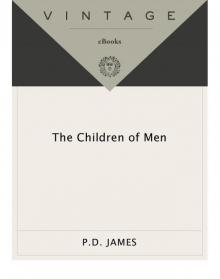 The Children of Men
The Children of Men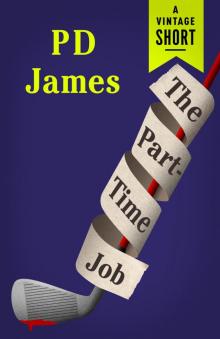 The Part-Time Job
The Part-Time Job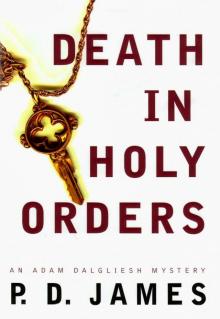 Death in Holy Orders
Death in Holy Orders The Victim
The Victim Shroud for a Nightingale
Shroud for a Nightingale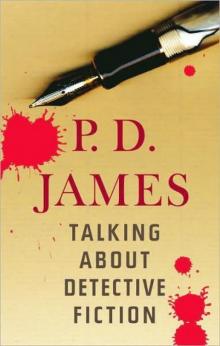 Talking about Detective Fiction
Talking about Detective Fiction Sleep No More
Sleep No More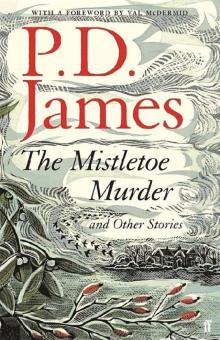 The Mistletoe Murder and Other Stories
The Mistletoe Murder and Other Stories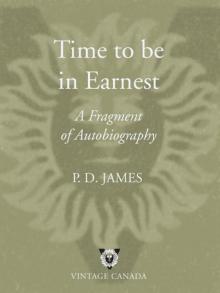 Time to Be in Earnest
Time to Be in Earnest Original Sin
Original Sin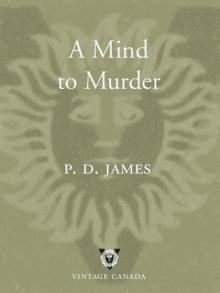 A Mind to Murder
A Mind to Murder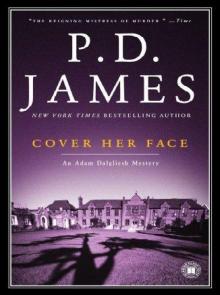 Cover Her Face
Cover Her Face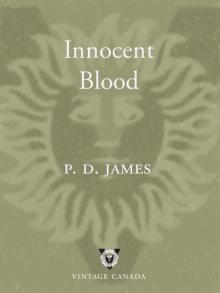 Innocent Blood
Innocent Blood Devices and Desires
Devices and Desires Sleep No More: Six Murderous Tales
Sleep No More: Six Murderous Tales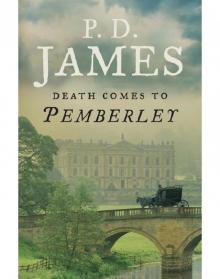 Death Comes to Pemberley
Death Comes to Pemberley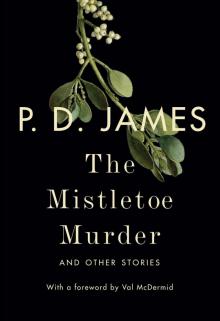 The Mistletoe Murder
The Mistletoe Murder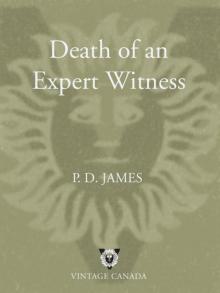 Death of an Expert Witness
Death of an Expert Witness The Private Patient
The Private Patient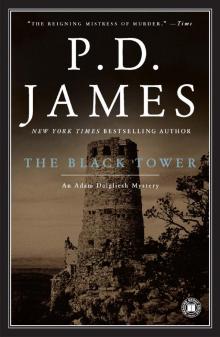 The Black Tower
The Black Tower Devices & Desires - Dalgleish 08
Devices & Desires - Dalgleish 08 Unnatural Causes
Unnatural Causes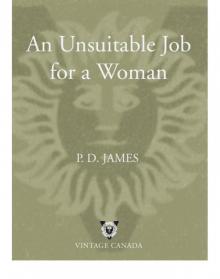 An Unsuitable Job for a Woman
An Unsuitable Job for a Woman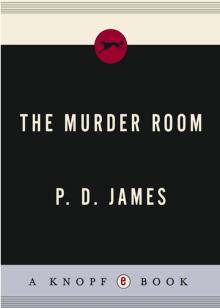 The Murder Room
The Murder Room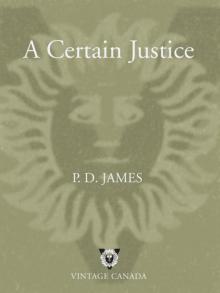 A Certain Justice
A Certain Justice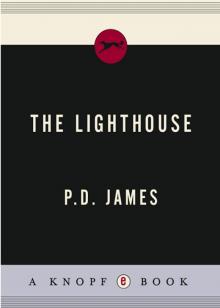 The Lighthouse
The Lighthouse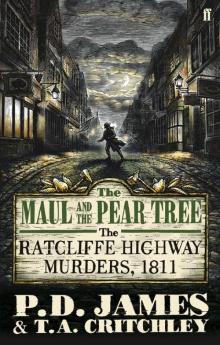 The Maul and the Pear Tree
The Maul and the Pear Tree